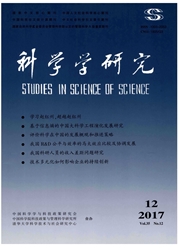

 中文摘要:
中文摘要:
产业技术政策是避免创新活动市场失灵、推动技术进步的重要手段。本文以装备制造业为研究对象,将产业技术政策分为需求导向和供给导向两种类型,以2005-2014年28个省份的面板数据为实证样本,采用差分内差分方法考察了不同导向型产业技术政策的创新激励效果及驱动机制,结果表明:(1)总体上,单一导向型政策仅对一种创新产出带来促进作用,需求导向型政策有利于工艺创新,供给导向性政策有利于产品创新;(2)高强度政策下,两类导向型政策均能有效地促进产品创新,对工艺创新则没有显著影响;(3)不同导向型政策的时效性存在一定差别,其中供给导向型政策对产品创新的影响效果需要较长时间才能得以显现;(4)政策驱动机制检验显示,产业技术政策的实施主要通过增加研发投入强度发挥作用。因此,在实施产业技术政策的过程中,应注重需求导向型和供给导向型政策的结合使用,并持续加强以研发补贴为主要形式的供给导向型政策的投入力度,从根本上提高企业的技术创新能力。
 英文摘要:
英文摘要:
The industrial technology policy is a significant measure to avoid the market failure of innovative activities and to promote technological progress. Based on the equipment manufacturing industry,this paper uses the difference-in-difference method to examine the innovation incentive effect and driving mechanism of different types of industry technology policies,which are divided into demand-pull policy and supply-push policy,by using a panel sample of 28 provinces from 2005 to 2014. The results show that:( 1) As a whole,a single type policy produces a good effect only on a certain type of innovation output. Demand-pull policy has a strong role in promoting process innovation activities and supply-push policy has a strong role in promoting product innovation activities.( 2) Both types of policy have a positive effect on promoting the product innovation under the high policy intensity,but not significant for the process innovation.( 3) Different types of policies have different timeliness. The incentive effect of supply-push policy on innovation needs a long time to work out.( 4) Results of the driven mechanism show that the implementation of the industrial technology policy is mainly influenced by increasing RD intensity. As a result,in the process of the implementation of industrial technology policy,it will be useful to improve the technological innovation ability of enterprises fundamentally by the combination of demand-pull policy and supply-push policy and enhancing persistent RD subsidy which is the main form of supply-push policy.
 同期刊论文项目
同期刊论文项目
 同项目期刊论文
同项目期刊论文
 期刊信息
期刊信息
